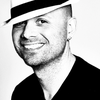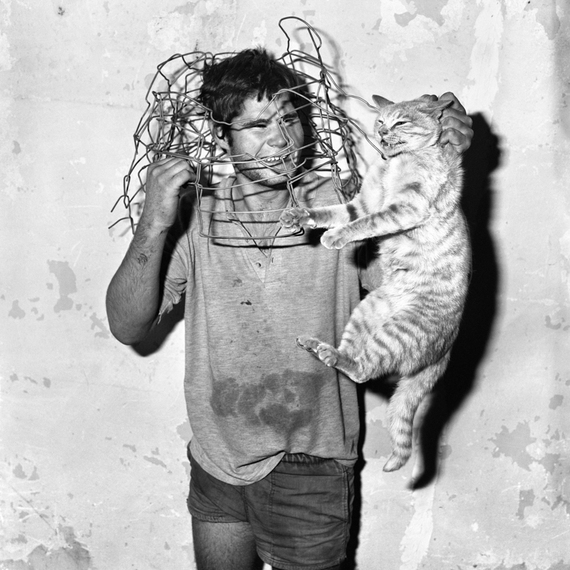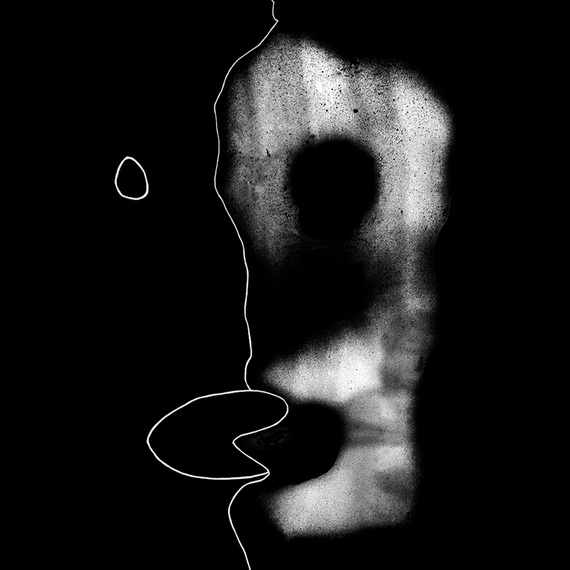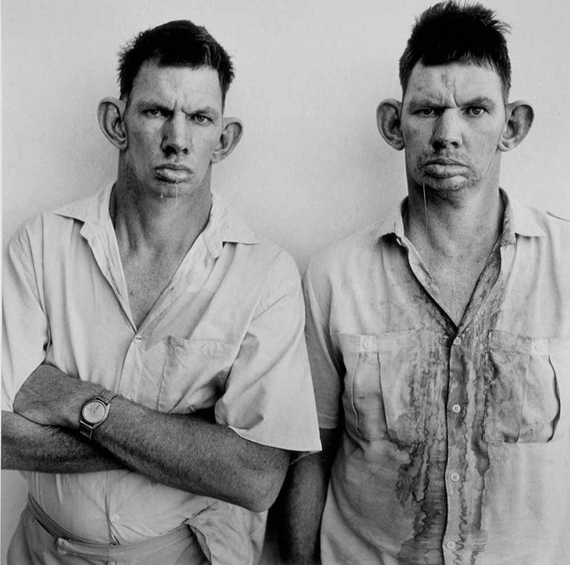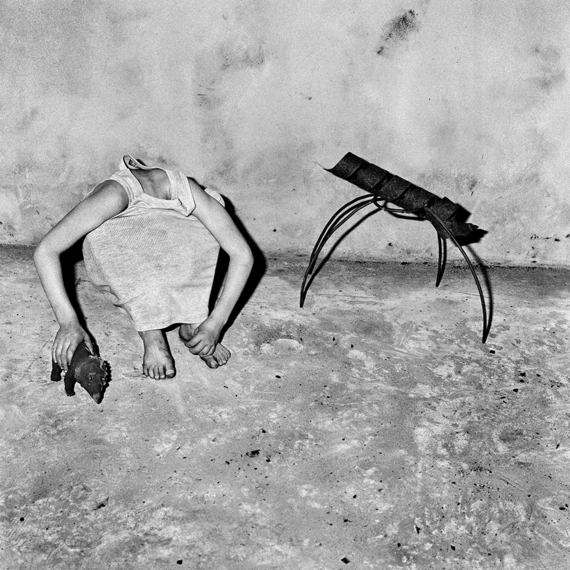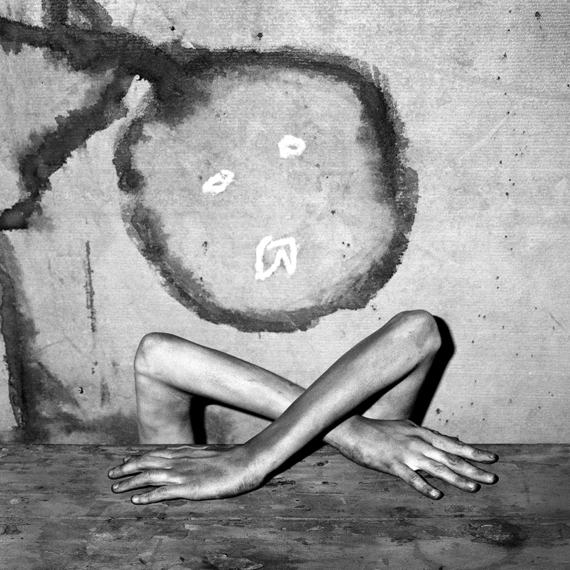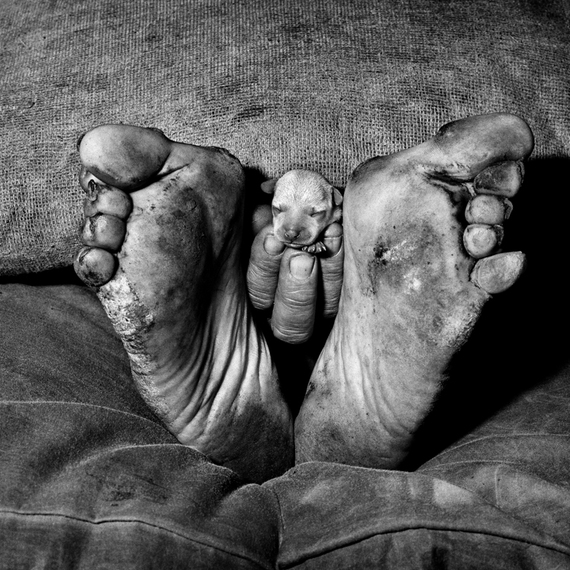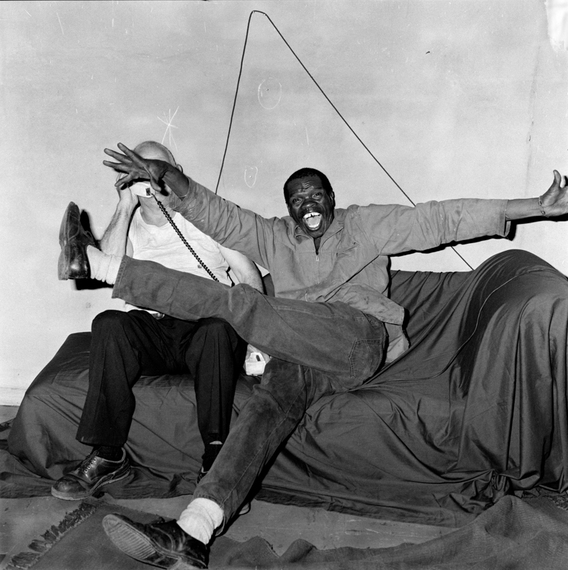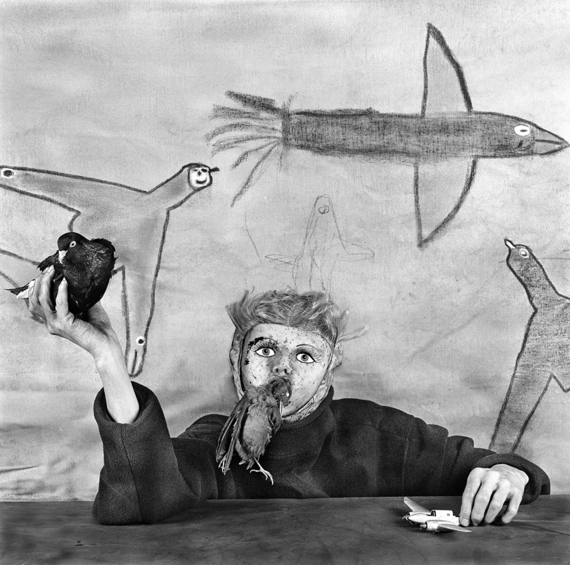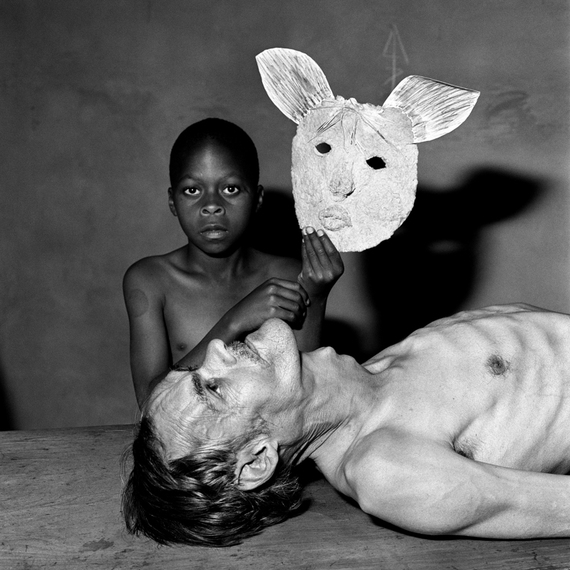I've been a big fan of Roger Ballen for many years. His work is fresh and terrifically rich. Using a cast of characters and animals, integrated with artwork and physical sets, Ballen blurs the lines between reality and fiction, documentary and storytelling. His work is, well, his. Ballen has invented a new hybrid aesthetic, but one which is unquestionably still rooted in photography.
Roger and I have corresponded over the years and he even blurbed both of my books. He's a fine man and a terrific artist. When I saw an opportunity to interview him for the Huffington Post blog, I jumped on it. Here's our conversation, as well as some of Ballen's most memorable photographs from over the years.
Michael Ernest Sweet: Roger, if I remember correctly, you were originally trained as an engineer of some type. This seems to be worlds apart from a career as not only a photographer, but also a conceptual fine art photographer no less. How did this all come about?
Roger Ballen: I received a Ph.D. in Mineral Economics from the Colorado School of Mines in 1981. For nearly twenty-five years after my graduation I was involved in mineral exploration throughout Africa. I started taking serious photographs around 1968, but did think of it as a possible profession until 2005 or so. I was passionate about mineral exploration and consider myself very lucky that as I was my own boss in this field for over three decades and I was still able to continue taking photographs in parallel with my job. When art photography students ask me what is my most important suggestion; I commonly reply that they should have an alternative profession.
Michael: Did you ever imagine yourself, when you were a young boy or teenager, making a career out of art?
Roger: My mother worked in Magnum during the 1960's and then started one of the first photographic galleries in New York in the early seventies. She represented important photographers such as Andre Kertesz. My mother frequently stated that I should never make photography my profession. Nevertheless, from my early twenties my hidden agenda was to find a way to spend a considerable amount of my time creating photographs.
Michael: Roger, much of your photography has distinct painterly qualities and many photographs even contain drawings. Is there an overlap for you in the arts? Do you produce these drawn elements yourself or are they appropriated?
Roger: Beginning in 2003 my photographs could be viewed as works of art that integrate and transform the medias of painting, drawing, sculpture, installations. I do not see myself as a pure photographer anymore; my work should be characterized as art. Many people now refer to the style that I have created in my imagery as Ballenesque. Over the past couple of years I have directed a number of videos namely Asylum of the Birds, Roger Ballen's Outland, and I fink u freeky which currently has 70 million hits on youtube.
The drawing in my photographs might be entirely mine or other peoples. Sometimes it is a mixture of the found and the produced. Without exception, every photograph that I take starts in a different way and hopefully concludes with a unique statement.
Michael: Animals also feature prominently in your work. Roger, what's with all the animals?
Roger: I consider myself as much as an animal photographer as a human one, Michael. In fact, for the past ten years there are far more animals then people in my images. I am obsessed with delineating the links between animal behaviour and those of people.
Michael: I think your work is nearly, if not entirely, all in monochrome. Why black and white?
Roger: For the past 50 years my photographs have only been in black and white. One cannot separate the aesthetics of my images from the fact that they have been taken in this media. It is an aesthetic that is inherently abstract and formally pure. I am the last generation that grew up in a photographic environment that was dominated by black and white and as long as I keep expanding my vision through black and white film there is no reason to change.
Michael: Do you still work with film or have you converted to digital?
Roger: I have been working for 33 years with a Rolleiflex two and a quarter film camera and have a special relationship to this media. Crucially, I am drawn to the mysterious element of film itself and how the photograph is transformed through the chemistry of the film and the processing.
Michael: There is definitely a "freak" element that rears its head throughout your body of work. Why all the freaks? Do you draw any inspiration from Diane Arbus, who was also a fan of the Halloween crowd?
Roger: My work has continually metamorphosed itself over the years. Initially I was influenced by the Magnum photographs, then by Walker Evans, Sander, and Weegee among others during the 1980's. During the nineteen nineties when I worked on my book Outland by Becket, Ionesco and Pinter. Beginning around the year 2000, I no longer felt that my imagery had any influences except from the photographs that I had taken. It would not be incorrect to state that my currently work might contain elements of surrealism and art brut.
Michael: You're been referred to as one of the most collected photographers alive. Quite a feat. Any advice to beginning "professional" art photographers on how they might begin to attract the attention of the art market?
Roger: The Art Market is one of the most complicated businesses in the world and therefore it is difficult to provide clear formula as to how one might interest collectors. Without any doubt discipline, passion, hard work and natural talent play a role. It is crucial to exhibit the work and produce publications. Whether this will result in sales and attention of the art market is difficult to surmise.
Michael: Roger, tell us about your sets, who makes them? How complex is your setup? I've heard that some of your projects were shot entirely within one house or one room, can you elaborate?
Roger: My goal in my photography is to produce imagery that has simple precise forms and complex deep metaphoric meanings. The last three book projects namely Shadow Chamber, Boarding House, and Asylum of the Birds were shot in different particular locations. The so-called sets reflect the reality of the locations transformed through my aesthetic.
Michael: Is there a message you are trying to send us, your audience? Is it philosophical, social, or political?
Roger: My photographs are primarily psychological statements that reflect on the human condition. It is my goal to produce images that assist people to come to terms with their inner psyches.
Michael: Roger, thank you so much for your time and for this wonderful and informative chat.
Roger: Thank you, Michael. Always a pleasure.
Roger Ballen is one of the most important photographers of his generation. He was born in New York in 1950 but for over 30 years he has lived and worked in South Africa. His work as a geologist took him out into the countryside and led him to take up his camera and explore the hidden world of small South African towns. Over the past thirty years his distinctive style of photography has evolved using a simple square format in stark and beautiful black and white. Visit his website for more about Roger and his work.
Michael Ernest Sweet is a Canadian writer and photographer. He lives in New York City.
